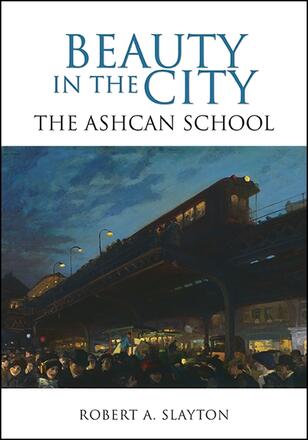
Beauty in the City
The Ashcan School
Alternative formats available from:
Presents a major new interpretation of the Ashcan School of Art, arguing that these artists made the working class city at the turn of the century a subject for beautiful art.
Description
Gold Medalist, 2018 Independent Publisher Book Awards in the US Northeast -Best Regional Non-Fiction Category
Finalist for the 2017 Foreword INDIES Book of the Year Award in the Regional category
Silver Winner, 2017 Foreword INDIES Book of the Year Awards in the History category
At the beginning of the twentieth century the Ashcan School of Art blazed onto the art scene, introducing a revolutionary vision of New York City. In contrast to the elite artists who painted the upper class bedecked in finery, in front of magnificent structures, or the progressive reformers who photographed the city as a slum, hopeless and full of despair, the Ashcan School held the unique belief that the industrial working-class city was a fit subject for great art. In Beauty in the City, Robert A. Slayton illustrates how these artists portrayed the working classes with respect and gloried in the drama of the subways and excavation sites, the office towers, and immigrant housing. Their art captured the emerging metropolis in all its facets, with its potent machinery and its class, ethnic, and gender issues. By exposing the realities of this new, modern America through their art—expressed in what they chose to draw, not in how they drew it—they created one of the great American art forms.
Robert A. Slayton is Henry Salvatori Professor of American Values and Traditions at Chapman University. He is the author of several books, including Empire Statesman: The Rise and Redemption of Al Smith.
Reviews
"What makes this volume interesting is that Slayton, a general historian rather than an art historian or a literary historian, provides readers with a broad social history context within which the goals and ideals of the Ashcan School artists are shown to make a great deal of sense. " — CHOICE
"Beautifully and profusely illustrated throughout … an inherently fascinating read. " — Midwest Book Review
"A delight for the eyes, a treat for city lovers, and a fine example of how historians can use art, Beauty in the City will enrich such fields as urban history, art history, the history of New York City, and America in the twentieth century. Robert Slayton has identified a group of artists who saw in the gritty details of city life real beauty and social meaning. " — Hasia R. Diner, author of Roads Taken: The Great Jewish Migrations to the New World and the Peddlers Who Forged the Way
"A century ago, the Ashcan painters created an art that was of, by, and for urban Americans—in all their exhilarating pluralism. Robert Slayton analyzes and celebrates their accomplishment in a work that combines brilliant scholarship and a profound passion for his subject. To his great credit, he reveals 'the beauty already there. '" — Michael Kazin, author of War Against War: The American Fight for Peace, 1914–1918
"With great narrative skill and finely drawn characters, Robert Slayton paints a vivid picture of New York and the art world in the early twentieth century. He reminds us that these artists and the city they inhabited continue to influence our perspective—about class, about gender, about race—a century later. This book is a wonderful, vibrant look at a forgotten part of our history. " — Terry Golway, author of Machine Made: Tammany Hall and the Creation of Modern American Politics